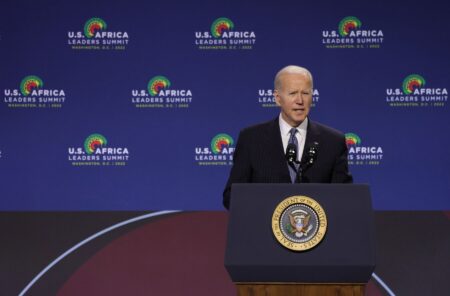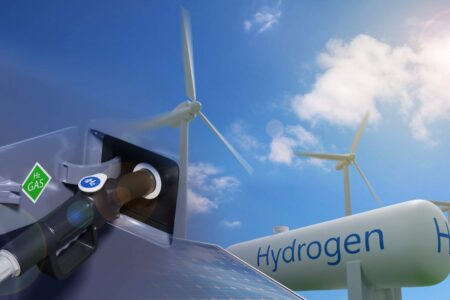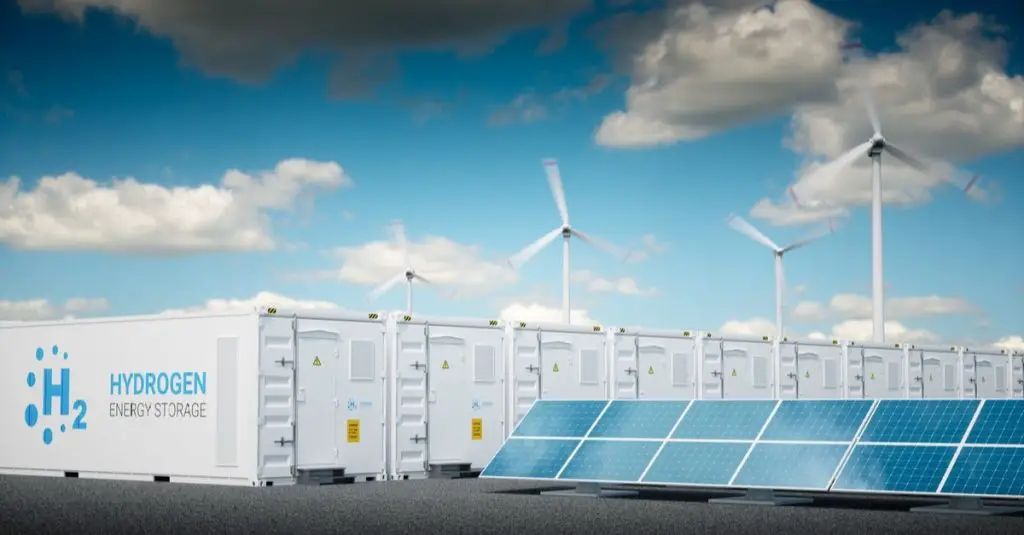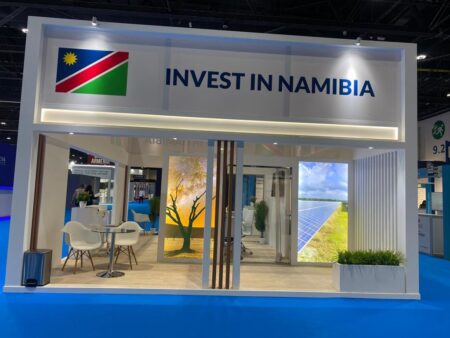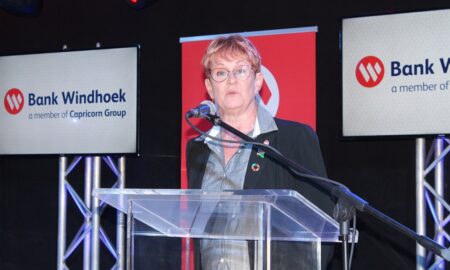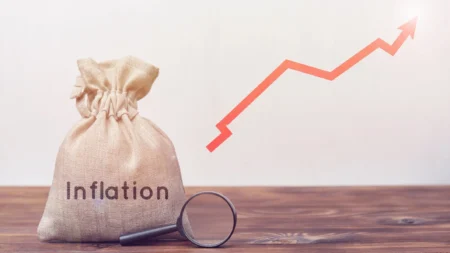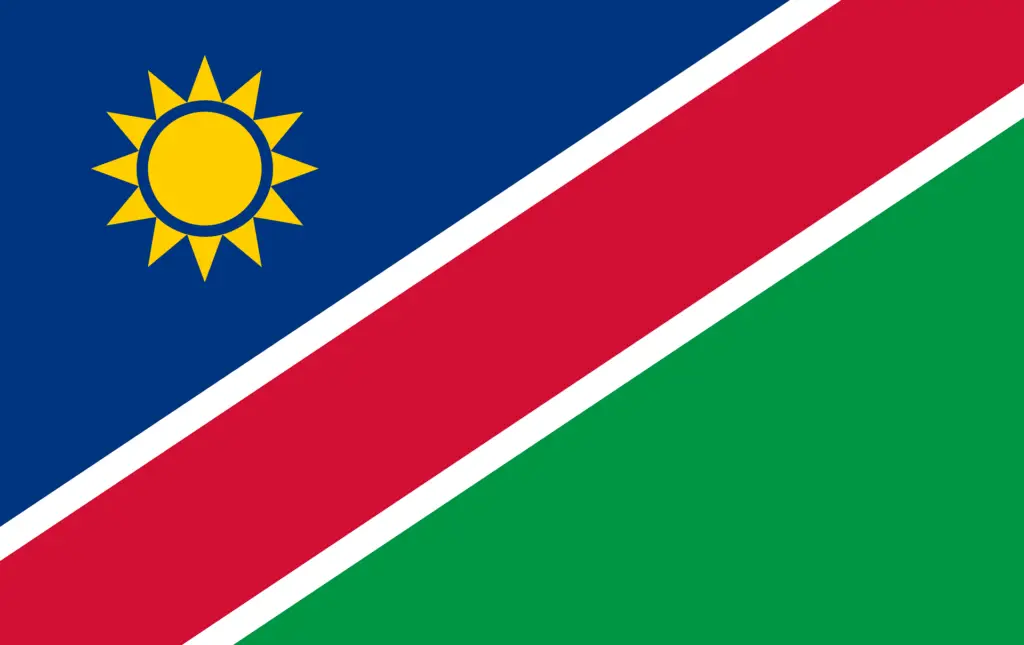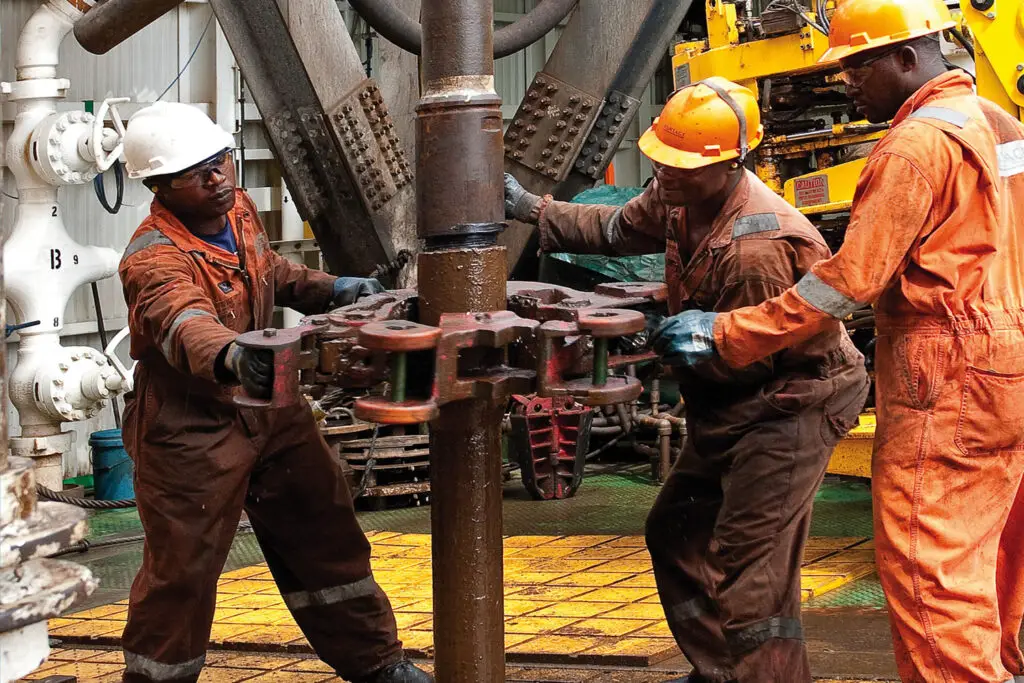- Africa’s new dawn: the rising role of digital and AI in agriculture
- Can Dangote Refinery Transform Africa Energy Ambition
- Gallup Survey: 80 per cent of Kenyan Workers Are Disengaged and Seek New Opportunities
- Madagascar Man Freed from 5KG Tumor After 15-Year Struggle
- How women in Africa are perceived and treated
- Sugar consumption in Kenya to Increase to 1.23 Million Tonnes
- Can Somalia and Turkey Oil deal Bring Change in Somaliland
- Remittances to Kenya dropped to $371.6 million in June, marking a six month low
Browsing: Namibia
- Namibia is fortunate to benefit from the experiences of other oil- and gas-producing states.
- The country’s oil and gas sector is still looking forward to reaching the production phase, but S&P Global analysts don’t anticipate Namibia’s first oil production will come until 2029.
- Further, the country’s first gas-to-power project is scheduled to begin in 2027.
Namibia’s energy sector is still looking forward to reaching the production phase — S&P Global analysts don’t anticipate Namibia’s first oil to come until 2029, and the country’s first gas-to-power project is scheduled to begin in 2027.
Ohio State Team Jersey
ohio state jersey
Ohio State Team Jersey
asu jersey
ohio state jersey
Iowa State Football Uniforms
detroit lions jersey
micah parsons jersey
micah parsons jersey
Iowa State Football Uniforms
fsu football jersey
OSU Jerseys
custom football jerseys
asu jersey
Before Namibia achieves these hotly anticipated milestones, Namibian lawmakers can implement thoughtful, …
- Being a latecomer to oil and gas development means that Namibia will be able to leverage innovations and technologies in carbon emission reductions.
- Namibia is well connected to the Southern African Development Community (SADC) region when it comes to power transmission and distribution.
- In an exclusive interview with Energy Capital & Power, Maggy Shino, Petroleum Commissioner of Namibia’s Ministry of Mines and Energy, discusses the country’s efforts to fast-track the development of breakthrough discoveries in the Orange Basin.
Q: What does the pathway to first oil look like for Namibia? Are there any updates on the technical and commercial viabilities of the recent discoveries?
Namibia has been on a roll since 2022, in that nearly every hole that has been drilled in the subsurface has yielded a positive indication of hydrocarbons. Between February 2022 and July 2023, we have had oil discoveries: the Graff-1, Jonker- 1X, La Rona-1 and Lesedi-1X …
- Continuing from the discussion of evolving US-Africa trade relations, a key aspect of this dynamic is the strategic objective of countering Chinese influence on the continent.
- By 2024, Africa is poised to undergo a significant shift in geopolitical and economic dynamics, emerging as a crucial arena for global powers such as China and the US.
- The evolving focus on Africa is driven by its transforming economic landscape, marked by rapid growth, a youthful population, and abundant resources, attracting attention from major players seeking strategic advantages.
By 2024, Africa will have witnessed the beginning of a new age in the geopolitical and economic dynamics of the world. In recent years, the continent has shifted its focus from humanitarian issues and developmental assistance to becoming an important strategic arena for the world’s leading powers, particularly China and the US. Several elements are coming together to highlight Africa’s growing importance internationally, driving this …
- Africa has a capacity of 125GW of hydrogen, second only to wind in terms of renewable energy.
- The Africa Green Hydrogen Alliance (AGHA) aims to produce 30-60 million tonnes of clean hydrogen annually to add up to $126 billion to the continent’s GDP by 2050.
- The gas is an environmentally positive fuel with low emissions when produced with electrolysis powered by renewable energy.
There’s a new powerhouse in African renewables. And it has plenty of experts talking about it. The report “The State of African Energy 2Q 2023 Outlook,” recently released by The African Energy Chamber (AEC), discusses the current and future projections for renewables on the continent. The most exciting finding is the competitive growth within the hydrogen electrolyzer space.
Africa’s current announced capacity of hydrogen, of about 125 gigawatts (GW), has overtaken solar capacity on the continent and is now second only to wind when it comes to …
- About 200,000 people in Windhoek will benefit from AfDB-funded solar lighting project.
- AfDB’s Urban and Municipal Development Fund helps countries invest in climate resilient cities.
- Rapid and uncontrolled urbanization in Namibia’s capital has seen the steady rise in informal settlements.
An estimated 50,000 homes in Namibia’s informal settlements will benefit from solar power connections as green revolution across African economies picks up speed. The solar project targeting informal settlements in Namibia’s capital city has received a grant of $485,000 from the African Development Bank’s Urban and Municipal Development Fund .
In Windhoek, where around 20 per cent of the population lacks access to power, the “Informal Settlement Renewable Electrification and Upgrading Program” will directly assist almost 200,000 people.
The Urban and Municipal Development Fund of the AfDB supports national socioeconomic development and poverty reduction by assisting governments in funding sustainable urban development for more livable, productive, and climate resilient cities.…
- The 12th edition of The Annual Investment Meeting (AIM), highlighted investment hotspots in various parts of the world.
- The sessions focused on Namibia, ASEAN and the Russia region as well as new investment destinations such as Moscow and Armenia.
- Experts highlighted how the increasing cooperation is leading to a favourable investment climate and opening up new opportunities for businesses.
The 12th edition of the the Annual Investment Meeting (AIM) has highlighted Namibia among other top investment hotspots internationally. AIM, which was hosted in Abu Dhabi, UAE, featured a series of regional and destination forums demonstrating available opportunities in various parts of the world.
In Africa, a special focus was given to Namibia. The session highlighted the southern African country’s potential as an investment hotspot, citing its $13 billion GDP reported in 2022. In addition, the country is rich in oil and gas reserves. Further, Namibia is deploying large-scale projects in …
- A finance-focused panel at the 2023 Namibia International Energy Conference explored new pathways to financing and developing capital-intensive African energy and infrastructure projects.
- As global financial institutions continue to reduce or eliminate fossil fuel lending, emerging producers such as Namibia are seeking to drive local and regional financial participation in capital-intensive projects and trade infrastructure.
- In addition to leveraging foreign investment as an end within itself, panelists discussed how the sector can leverage foreign support as a means of creating local capacity through regional debt and credit-support instruments.
Namibia is looking to increase local investment in large-scale energy projects moving forward, a panel at the 2023 Namibia International Energy Conference, has concluded.
Under the theme, “Financing Energy & Power Projects: Trends, Outlook & Forecast,” a strategic panel examined how the southern Africa country can finance massive projects and structure deals that benefit regional economies.
As global financial institutions continue to …
- The annual inflation rate for February 2023 increased by 7.2 per cent compared to 4.5 per cent recorded in February 2022.
- On a monthly basis, inflation rate increased to 0.4 per cent compared to 1.1 per cent registered in the earlier month.
- Load-shedding in South Africa is preventing farmers from buying livestock from Namibia.
In February, the cost of goods and services increased more sharply and the outlook does not appear promising, particularly regarding food, which saw a 14 per cent hike. The Namibian Statistics Agency disclosed inflation figures for February yesterday, with the month displaying a 7.2 per cent rate, one percentage point higher than January’s inflation rate.
This 7.2 per cent is taking the country back to August 2022 when inflation reached a peak of 7.3 per cent. While most goods and services’ prices have increased overall, service inflation continues to weigh on headline inflation, rising at a …
Namibia has made progress on structural changes to foster economic diversification and boost productivity. Improving the business environment, promoting access to capital, improving governance, and decreasing skills mismatches are crucial for stimulating growth and achieving long-term debt sustainability.…
Senegal’s oil and gas discoveries account for only 0.07 per cent and 0.5 per cent, respectively, of world reserves.
But Senegal’s Petroleum and Energies Minister Sophie Gladima said, “they are important enough to radically change the economy and industrial fabric of our country and thereby its future prospects.”
“Just exploiting our hydrocarbons will enable us to accelerate public access to electricity and, above all, to lower the cost of production and encourage industrialisation.”
She further underlined the legal framework needed to bring thousands of Senegalese jobs into the sector and the setting up of the National Institute of Oil and Gas to turn out a highly qualified workforce.
Funny enough, Namibia, also admitted as a member, is not yet producing any oil. Namibia recently announced that it would consider joining the Organization of Petroleum Exporting Countries if the oil fields are found to be large enough for commercial development.…







